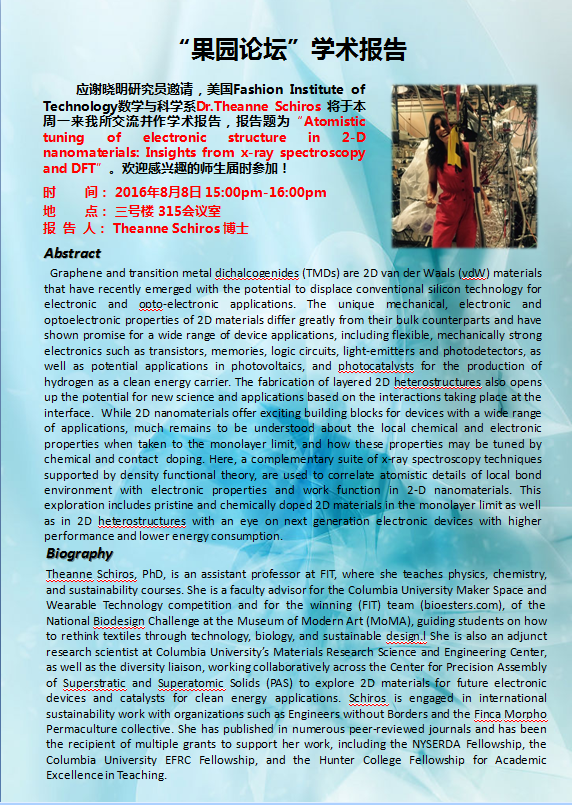Atomistic tuning of electronic structure in 2-D nanomaterials: Insights from x-ray spectroscopy and DFT
Graphene and transition metal dichalcogenides (TMDs) are 2D van der Waals (vdW) materials that have recently emerged with the potential to displace conventional silicon technology for electronic and opto-electronic applications. The unique mechanical, electronic and optoelectronic properties of 2D materials differ greatly from their bulk counterparts and have shown promise for a wide range of device applications, including flexible, mechanically strong electronics such as transistors, memories, logic circuits, light-emitters and photodetectors, as well as potential applications in photovoltaics, and photocatalysts for the production of hydrogen as a clean energy carrier. The fabrication of layered 2D heterostructures also opens up the potential for new science and applications based on the interactions taking place at the interface. While 2D nanomaterials offer exciting building blocks for devices with a wide range of applications, much remains to be understood about the local chemical and electronic properties when taken to the monolayer limit, and how these properties may be tuned by chemical and contact doping. Here, a complementary suite of x-ray spectroscopy techniques supported by density functional theory, are used to correlate atomistic details of local bond environment with electronic properties and work function in 2-D nanomaterials. This exploration includes pristine and chemically doped 2D materials in the monolayer limit as well as in 2D heterostructures with an eye on next generation electronic devices with higher performance and lower energy consumption.

